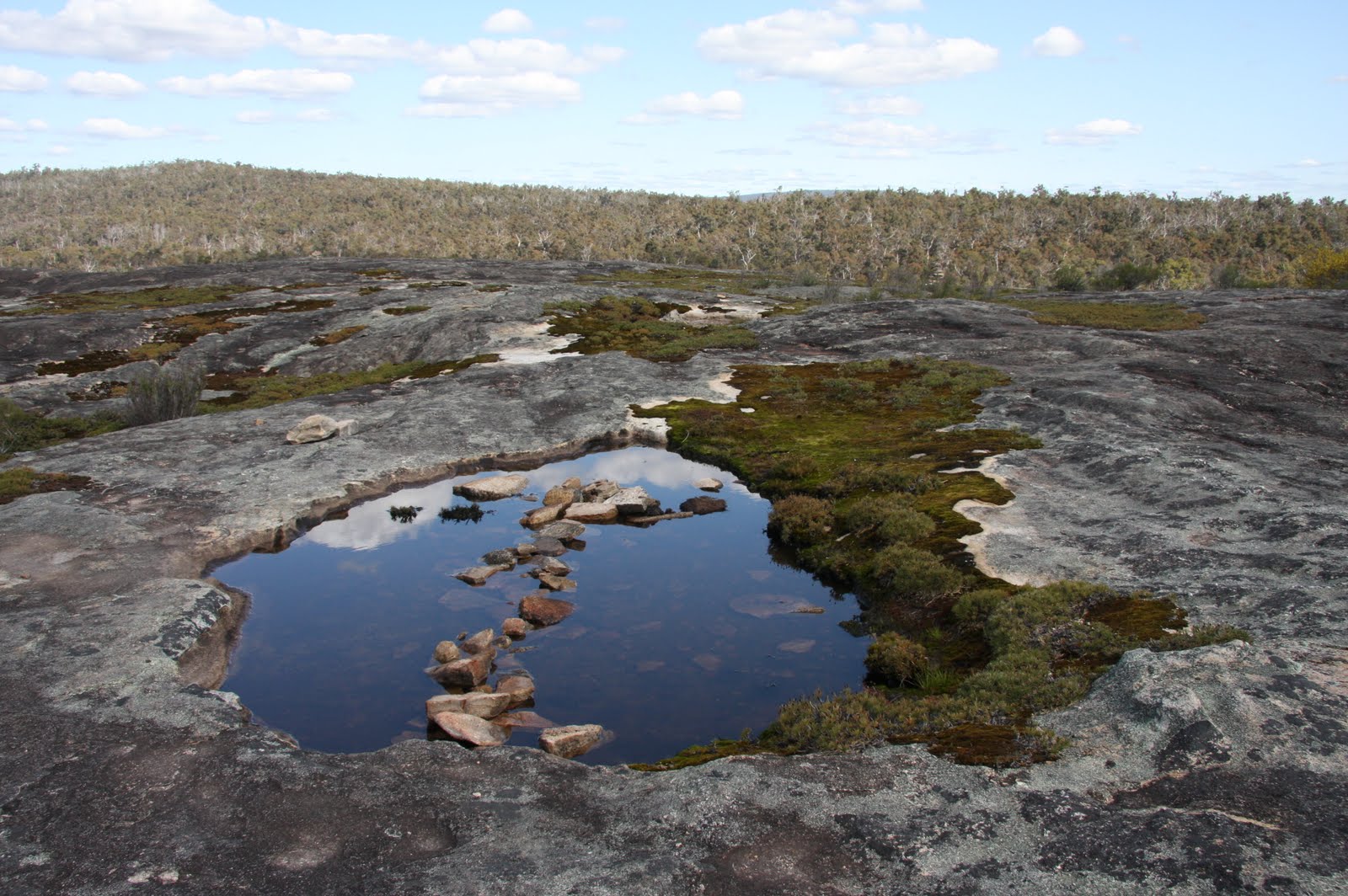Natural rock catchment and Open water reservoir
These are naturally occurring catchments of bare rock that have high runoff coefficients (around 0.9). Water can be stored as an open reservoir behind a retaining structure, with storage capacities ranging from 20 – 4,000 m3, or can be stored directly in a covered storage tank that collects water directly from the catchment.
Contents
Suitable conditions
- The rock that makes up the catchment should be bare and free of vegetation/soil. It should have no fractures or cracks that would result in a loss of water through seepage.
- Site the dams for rock catchments to maximize the natural topography – to get the best volume, make dams on the lower side of existing rock pools.
| Advantages | Disadvantages/limitations |
|---|---|
| - High runoff coefficient = similar to roof catchments in that even small showers produce water - Minimal seepage |
- Not many sites suitable - If building tanks that store water directly, storage capacity is limited compared to an open reservoir |

